#and then it was $16 and then it was $18 and THEN it was $TWENTY
Explore tagged Tumblr posts
Text
Yeah, I always assumed Connie was early to mid twenties as of the most recent albums.
Time to show my work. In License to Drive, I believe Eugene mentions being in college for 7 years, which would put him at around 19-20 years old since he graduated high-school at 12 unless he took a gap year, which is unlikely, it's Eugene. Connie was teaching Eugene and she already had her license which probably places her at 16. 14.5 at the absolute earliest if she got a restricted license in one of the states that offers that, but I think that's unlikely, but that's the minimum. I'm gonna go with the traditional 16 to get her license since Buck got his license as soon as legally possible, which was on his 16th birthday.
So, Connie is around 3-4 years younger than Eugene. We also know Buck's dad, Cash Oliver, indirectly met Eugene right before Buck was born. He lived with the Burnette's from the time he was 8-18. And from Cash's description, it sounded like he was still fairly young. Maybe 10-14? (Seeing as Eugene moved when he was 12 I'm guessing that's around the time they were in the same general area as Harlanville but this is just wild speculation.) So, Eugene was approximately 10-14 by my best guess, when he ran into Cash, and Buck is 16, that would place him at 26-30, which also lines up with Katrina pointing out that they both were not 25 when they started dating but the way she phrases it makes it sound like they are currently at least 25, but most likely older. With Connie being 3-4 years younger, this should place her at around 21-27.
My personal headcanon is that Eugene is 28 and Connie is 25. This answer is way more involved than I thought it was going to be.
AiO Thought of the Week
Age is truly just a foreign concept in Odyssey and there are no true answers but here are my headcannons:
Katrina is older than Eugene from somewhere to a few months upto a year and a half.
Eugene was 17-18 when he was hired at Whit’s End but is widely assumed to be older because of his voice and academic level but he 100% looked his age.
The writers said on the official pod Jay's age is a dependent variable. So I think when Jay is hanging out with Zoey, Buddy, or any of the other middle schoolers he is 13/14. With the rare exception, Jay is otherwise 17 however his appearance is still skued toward the 13/14.(this might be because of his height but that's a different headcannon) These numbers only apply to album 58 and beyond before that he is younger and is more consistent in age.
Jason is in his 40s.
Connie still hasn't quite reached her 30s but is almost there. I know she's still earning her degree but if Eugene is any indication 10yrs is not an unreasonable amount of time for a degree from CCCC. Plus I think she's swapped majors like 3 times.
Eugene and Katrina are very early 30s
Whit despite being born in 1925/26 is an ageless being of perpetual Eldersness and is therefore older than anyone in a given room and yet, still possess the ability to out-manuver the authorities both physically and mentally
Jack and Wilson are also ageless beings but not on Whit's level.
Tom lived just out of town and so aged normally, I guess. I have no evidence but I feel like he was born in 1931.
Bernard despite being one of the original "old men that make up Connie’s friend group" is good decade or so younger than Tom and Whit, still way older than Connie though.
31 notes
·
View notes
Text
anyone else run into this yet? this is the only show i’ve seen this for so far (voltron legendary defender) but i’m honestly just getting reeeaaalll tired of netflix’s shit (see below the little padlock in the corner of the voltron icon i have circled at the top of the image)
and yes, the entire series is locked.

#i used to have the most expensive package from them bc life it too short for fucking ads#and that used to be like $15 or so#and then it was $16 and then it was $18 and THEN it was $TWENTY#and then i had it connected with my phone plan to save me money#but my plan stayed the same#and THEN like 2 months ago they were like#oh guess what#your plan is just going to have ads now#hahaha fuck you#and now things are locked??#wtf#yeah netflix fuck me ig#fuckers#sick of their shit#netflix#i have a few streaming services for convenience#especially bc we got rid of satellite and we can’t have cable where we live.#but damn if it doesn’t get more expensive and less and less convenient all the fucking time#interview with the guardian
2 notes
·
View notes
Text
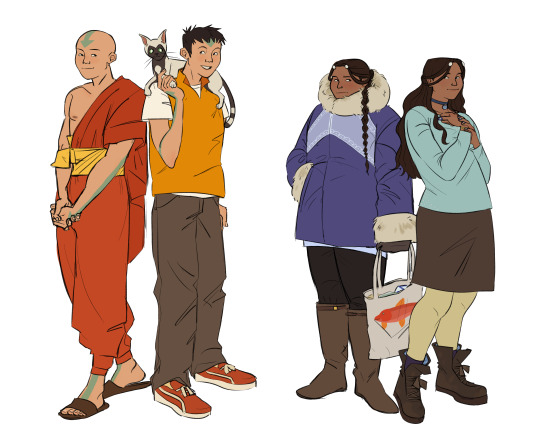
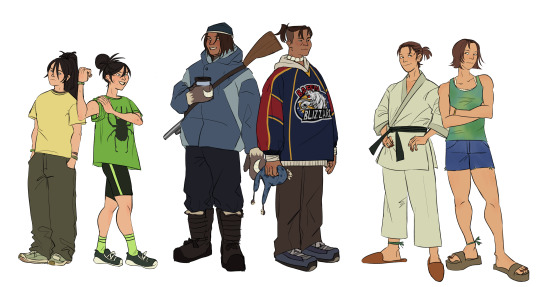
Part 2 of my modern avatar au, The Gaang (part 1)
#avatar aang#atla katara#atla toph#atla sokka#atla suki#atla#avatar the last airbender#modern avatar#atla modern au#my art#atla fanart#kataang#CAUSE THEY ARE IMPORTANT IN THIS AU#lots of inner debates on how to deal with aang's tattoos and if to make him say an actual buddhist#decided that he and monk gyatso (plus a handful of others) are/were part of a largely dying religion of a nomadic group#from the himalayan/tibetan plateau region that's a mix of buddhism hinduism and other religions (plus air nomad culture)#due to the politics of region aang and gyatso traveled around the world which is how he met katara and sokka#who were on a fieldtrip in the south (of canada)#they live in the Qikiqtaaluk Region originally in a smaller northern town but to continue their schooling they moved to iqaluit#Toph is from China and she met the gaang during the first big trip sokka katara and aang took together (at aangs begging)#meet her the summer before katara's first semester of college (so she was 18 aang 16 sokka 19 toph 16)#also by 16 aang is his own guardian cause of gyatso's death so he just does whatever p much#suki from okinawa and they meet briefly another summer of college when traveling to a bunch of islands in the pacific#suki specializes in and teaches ryukyuan martial arts (she's ryukyuan)#all reunite after sokka and katara's graduation (katara graduates a year early) during aang sokka and kataras celebration world tour#where they come into full actual contact with the fire nation crew#they are all in their twenties in these expect for monk aang who is a teen#hehe i cant wait to make more for this auuuu
4K notes
·
View notes
Text
The disproportionate hate show!Criston gets is so bizarre. No argument I’ve seen his haters make sofar has made any sense to me.
He is outside of Mysaria the only siginficant lowborn character we meet. He rises up from the son of a steward of a minor house to the position of King‘s Guard thanks to Rhaenyra, who then pressures him into having sex with her, sth that could get him executed. Afterwards she not just rejects his proposal, but laughs in his face.
And when as a result of this experience Criston is shown to be emotional distraught and bitter, people call him an incel? (I assume that they refer to his ideology and not his actual status as a celibate, because not being celibate is literally what started this mess)
It really rubs me the wrong way, when people remove all context from this situation. A lower class person getting a well-off position from a person with authority, who they then end up having sex with is ALWAYS a relationship with a power imbalance (Obviously there are irl relationships like this, who work out and manage to be relatively healthy, but that doesn‘t remove the imbalance of power and the increased likelyhood of abuse).
We see Criston‘s reluctance when Rhaenyra makes her move. It does not matter if Criston was attracted to her or not. The simple fact that he is in a vunerable position makes him denying her a risk. It also does not matter that Rhaenyra had no malicious intentions, the simple fact that she ignores Criston‘s refusal and continues pressuring make this whole scene super uncomfortable. Her ignorance and naivety does not erase the impact of her actions.
Criston growing to hate her afterwards is perfectly justified.
As a man who grew up in Westerosi society, he inevitably holds misogynist beliefs, which is reflected in the insults he uses after this. But compared to the acts of every single character on this show, singling out his character is pretty ludicrous, when we have plenty of male (and female) characters who have done worse:
Like commiting SA (Viserys, Aegon), grooming young girls (Viserys again! I really hate this man, Daemon, Otto, Corlys and Rhaenys because telling your daughter she has to sleep with a grown man when she is 14 is pretty much the same thing Otto does to Alicent) and the only major crime Criston is guilty of sofar: murder (Daemon killed his wife and the servant in Driftmark, also he did large scale police violence which people love to forget about, Rhaenys killed potentially hundreds of smallfolk at the coronation)
Obviously, anybody is allowed to dislike whatever character they want, but a lot of people flatten Criston into just a misogynistic bitter incel who is just mad that Rhaenyra has sex, ignoring every bit of context we get for his behaviour.
This becomes escpecially weird, when those same people have no problem stanning Daemon, who calls his 1st wife a „bitch“, „uglier than sheep“ and then murders her, because he sees her as inferior as a none-valyrian. But Criston calling Rhaenyra, a person he feels personally wronged by, a „spoiled cunt“ is apparently a too far.
It is just really frustating when the character with the canonically lowest social standing gets afforded the least amount of nuance by the fandom (the writers are obvs not excempt from this criticism either).
#There are also people who like to bring up Christon‘s age relativ to Rhaenyra and accuse him of being predatory towards her#This is dumb because for one this still doesn‘t erase the power imbalance#Nor has Christon ever been shown to make an inappropriate move towards her#Also them having a significant age gap in the show is debatable (book Criston is another matter)#We never get a clear age for Christon Fabien never being aged up doesn‘t help either#But based on context clues he is relatively young when we first meet him#He is a knight and fought in one war that doesn‘t mean anything when we have characters who are 16 and are full fledged knights in asoiaf#So he might be anywhere from 18/19 to early twenties when Rhaenyra is 14 in ep1#Rhaenyra in the ep4 is 18 so at most Criston would be 25#Compared to all of Rhaenyra‘s relationships this is fine actually realistically she and Harwin would have had a similar age gap#And that relationship is broadly regarded as her most healthy relationship#hotd#house of the dragon#criston cole#pro criston cole#rhaenyra critical#anti rhaenyra targaryen
227 notes
·
View notes
Text
Me every time it’s time to reread Cress:
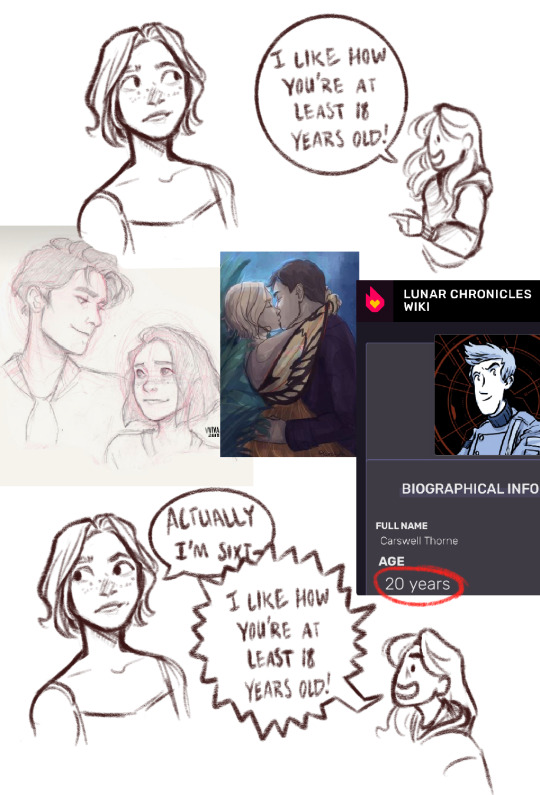
#like 16 and TWENTY??? that’s a child!!!!#there is also no plot reason why Cress couldn’t have been 18 canonically. it only minimally changes Dr. Erland’s timeline#cresswell#tlc#the lunar chronicles#tlc memes#lunar chronicles fanart
280 notes
·
View notes
Text
I'm realizing I think a lot of the Links are younger then most people generally put them at
#not everybody#but#like I think Legend is only like 17-18#maybe even more like 16 if I'm feeling particularly angsty#a lot of people put him more at 19-20+#and i think warriors and twilight are only like early twenties#no more than 23 or 4#just something interesting i noticed#rambles from the floor#linkeduniverse#linked universe#maybe its because i have a lot of younger siblings idk
179 notes
·
View notes
Text
just realized alvar is like a forty year old man. what the hell
#i always imagined him as like the cool older brother in his twenties#but if he’s like jolie’s age#and she died around 16 years ago#and you’re like 18-20 in the elite levels#that means alvars AT LEAST in his thirties#why is this grown man beefing with children#kotlc
31 notes
·
View notes
Text
sorry side note. saw someone in the tags of that poll saying claire is “16”. you. you guys know she’s like. 20-something the last time we see her in the show, right. like if i remember correctly she is 20 Exactly when she has werewolf drama. you guys are aware that claire is an adult woman, right. that’s. she’s an adult. she’s not 16. sorry this is fucking with my head. you guys know she’s a fucking adult don’t you. please god say sike.
#i’m pretty sure she’s like 17-18 by the time she comes back at Least but she’s very much in her twenties at her last appearance#that is. she’s not a teenager. that’s an adult woman.#i’m not voting for her because im gay for mr crowley but its important to me. that you guys. know. that she’s an adult.#……….actually now that i think about it if the misconception that claire is like 15-16 is common in the fandom that would explain. A Lot.#about how she is talked about and treated. and i don’t mean that in a positive way. to be clear.
9 notes
·
View notes
Text
Actually no I think Númenóreans go through puberty later than normal humans but like, it overlaps. Barely.
So (assuming Númenórean women get periods? they might not get periods because elves don't? if not the timing is still similar but we don't get a neat marker) the girls might start menstruating at about sixteen or seventeen — technically very late, but by far not outside the realm of human experience, with everything else spaced out accordingly.
#So... 18 probably feels like 15... 22 as 18 and then 25 is 21 right#With a probably oddly modern understanding of what is right for which age of life?#I do not think they have a concept of adolescence per se since the aesthetic is completely different but there is this idea#that you get a lot of freedom between 15 and 25#...now that I'm thinking about this again it probably differed in Númenor versus Late T.A. Dunedain (small and thus relatively 'unmingled')#versus Late T.A. Gondor (large sprawling)#Númenor would have 18: 14 and 21: between 18 and 20#The Northern Dunedain would portray what I proposed in the first tag and Gondor looks at things kinda like the 21st century West#except like the people who do routinely marry before twenty but also think 16 year olds shouldn't have to fight in wars#Rohan is roughly medieval but without human rights violations#Yes this was prompted by Gilraen and also a weird thing to elaborate on lol#my post#peoples of arda#Númenor#dunedain#tw menstruation
1 note
·
View note
Text
men really gotta stop writing fictional excuses to put "worldy" "older" feminine minds/psyches into childrens bodies just so an old man can fuck them
#like its always annoyed me because i dont dislike the thought experiment that is old awarebess in a young body its a very fraught thing thus#fascinating and all#but like#im doin the 2nd dune book#and i dont think this author realizes all of the tiny threads he doesnt keep track of for one#but for two his grasp of narrative time for someone so preoccupied with a story based largely on future vision is...#either bad or just callously ignorant#but this part i dont think he didnt realize i think he was fully aware#that aliyah is only what? 16? 18 at most id believe since he last mentioned her age at 15?#and *he* has to be what? given the fatherly notions and his station when i think paul was 15... late twenties at least???? at LEAST.#thats gross herbert
8 notes
·
View notes
Text
kinda wild how Overwatch just kept recruiting essentially children huh
#between Cass Angie and Lena their ranks were essentially just made up of kids#while Lena was technically an adult they still recruited her for Slipstream at like 18/19 which is#Still Too Young#Not to mention the fact that she was somewhat ( SOMEWHAT ) manipulated into the military at 16/17#which I'll elaborate later on when I actually have time#but they really kept looking at these children and said “yeah these are them”#“Slap em on the cover of magazines and talk shows and also have them save the world”#one of those “if I were to have a nickel” situations but it's 3 nickels#just weird it happened 3 times#anyway writing one lil thing for puffin and then I'm out again bc I need to catch on stuff#Cali was great though!! I landed and immediately was hit by the snowstorm which was just awesome#( ooc. )#ask to tag#I also just had the funny thought of Angela meeting Lena for the first time and just “AGAIN?????”#also i think Genji was early-mid twenties but also Not Fair
9 notes
·
View notes
Text
Me when I remember I’m 19 and not 18 and the entire last year and a half has felt like a dream






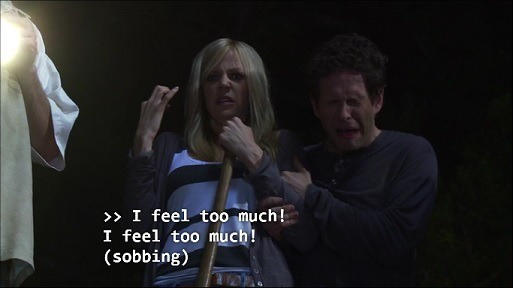
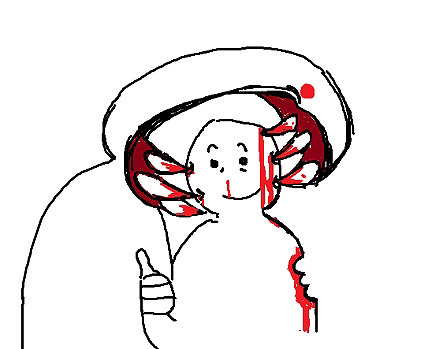

#ME SUDDENLY GOING WAIT HOW OLD AM I AND HAVING TO CHECK MY PINTEREST BIO LIKE YOURE TELLING ME IM GONNA BE TWENTY IN LESS THAN A YEAR.#IM GONNA THROW UP WHAT THE FUCK AHHHHH TIME IS PASSING IM STILL A FUCK UP I DONT THINK ILL EVER GET MY SHIT TOGETHER#I THINK ILL BE HAPPY BUT I THINK ILL ALWAYS BE AFRAID OF IT ALL CRUMBLING YKNOW I WONT BE NORMAL BUT ILL BE HAPPY AND ILL MAKE ART#BUT LIKE. FUCK MAN. ANOTHER YEAR ALONE#like ughhhh idk how to explain it. soemthing soemthing getting older but not growing up at all like I feel like maybe I’m 16 like that’s#when every one else suddenly became real people and I stayed the same between depression and 2020 that explains a lot and now I’m just like#frozen in my brain but my body is getting older but all of these years count and in the future I’ll look back and go yeah I don’t remember#what I did when I was 18/19 bc all I did was isolate smoke weed and be depressed#like wahhhhhh emotional today thanks weed and meds and period supposed to start today
6 notes
·
View notes
Text
If I had a nickel for every time the person I'm carding to check I can legally serve them alcohol flips the script on me and accuses me of being too young to serve alcohol, I'd have two nickels. Which isn't much, but it's weird it's happened twice.
#I went from people assuming I was well over a decade older (even 8-18!)to people assuming I'm barely sixteen when I'm well into my twenties#Which is a trip#As it turns out being trans is the equivalent to drinking the fountain of youth (even when you're presenting as your agab)#the more you know#trans ftm#personal#Also a moment of silence for the laws on drinking alcohol in the Netherlands and how they differ with their counterparts in Belgium#One of these days I won't have a colleague standing over my shoulder to remind me 16 y/os cannot order beer and I'll get myself in trouble
2 notes
·
View notes
Text
I am so fucked. I haven't had a crush on a man under 40 for three years. And I haven't had a crush on a real life person for longer
#at this point am I even attracted to people irl?? self shipping where would I be without you self shipping#guys I'm 19 😭#me three yrs ago like 'yeah I have kinda daddy issues but i don't think it's affected my taste in men'#me now.#yk how when ur a kid ur attracted to kids ur age then when ur a teen ur attracted to teens and some adults#and then you come out of that and ur attracted to adults ur age#yeah I think I. i think I went straight frm 16-17 yr olds to 40+#i skipped two decades and WHY. it was so sudden too#brain 'ur not attracted to teens anymore bc you're an adult now. anyone under 18 17 would be weird and too young'#me 'okay great! so twenty?'#my brain ' :) '#me '🙁 so twenty....right?'#' :)) '#alexprobablytalksshit
1 note
·
View note
Text
also maybe it’s just me but it feels so disgusting and weird to me to cast fuaiz in that role when he’s only 18
#and depending on how long ago they filmed he could’ve been 17#like he’s playing someone probably in their what late-mid twenties??#he did a great job but why would they put an 18 year old in that role#having sex scenes with a 27 and 24 year old and those being his main scenes for the first few episodes#i know the age of consent in thailand is 16 but i can’t help but feel grossed out by it#15*#corey.txt
0 notes
Text
Midori is only like..15 here..it’s only been 3 years..oh man..
( ribbon worm virus btw )
#she’s 15 currently but she’ll turn 16 later in writing probably since this takes place in early February ( yes just like now )#her brother is only like 18-19#or. Was.#I’m unsure if Kakeru is alive or not.#nobody in the cast is twenty yet..gotdamn..#I think she’s like 13 the first time we meet her in canon..just cause it makes sense. Her and her brother are 3 years apart#so it’d just be logical for her to be 13 cause kakeru is 16.#ribbon worm virus.au ( 💉
0 notes